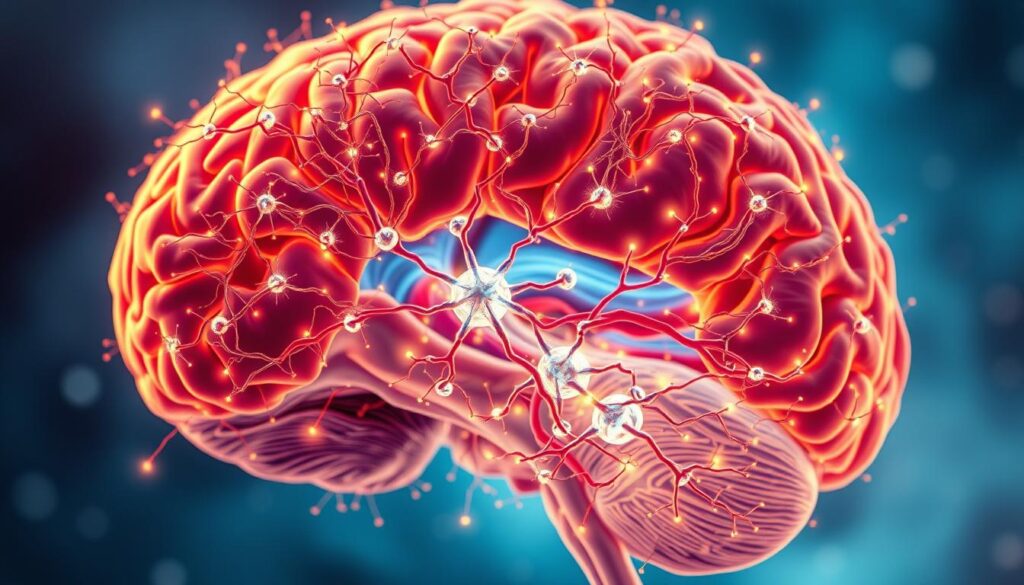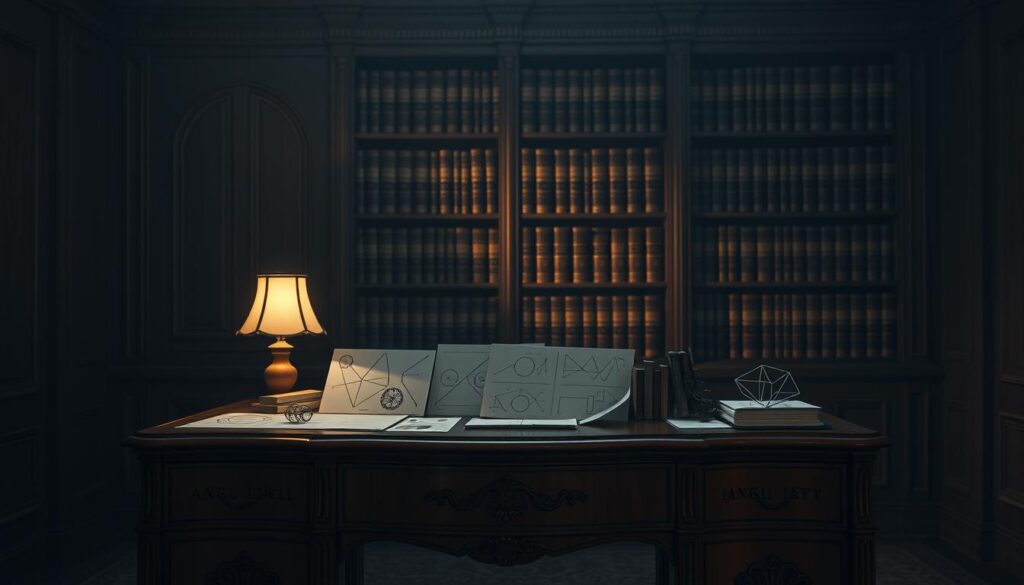Intuition and deep thinking are not opposites but partners in effective thinking. Gut feelings guide decisions when data is unclear. Deep thinking helps analyze information for informed choices. Together, they balance each other for better problem-solving and decision-making.
Imagine boarding a flight and realizing your wallet is missing 75 minutes later. A simple 3-step check could prevent this. This shows how instinct and structured checks improve outcomes. Neuroscientist Joseph Mikels found older adults rely more on intuition as they age.
Malcolm Gladwell’s “blinking” (instinct) and “thinking” (analysis) show how intuition and logic work together. The U.S. Marine Corps trains soldiers to use their gut instincts with sharp observation. This mirrors the “wise mind” concept from Dialectical Behavior Therapy, where emotion and logic unite for better choices.
Experts like dentists or entrepreneurs often trust their intuition. 75% of successful business leaders say gut decisions led to breakthroughs. Yet, 90% of executives agree both intuition and data are key. By understanding how these processes interact, we can make smarter, more balanced decisions.
Understanding Intuition and Deep Thinking
Intuitive thinking and analytical thinking are two ways our minds work. System 1 is fast and automatic, using patterns in our brain. It’s like recognizing a friend’s face without trying. System 2 is slow and deliberate, used for solving complex problems. It’s like calculating a tip or analyzing data.
Neuroscience shows 95% of brain activity is unconscious. This means our decisions often start as gut feelings. Chess masters, for example, use System 1 to see moves instantly, then System 2 to check the outcomes. This isn’t a competition but a partnership.
Unconscious processing in the prefrontal cortex and hippocampus shapes our intuition. Analytical thinking, on the other hand, needs conscious focus. Studies show intuition is great at spotting hidden patterns, like market trends. But analysis checks if those insights make sense.
“Intuition is for seeing the answer. Analysis is for verifying it.”
By balancing these modes, people like Netflix’s Reed Hastings make better decisions. They mix instinct with strategy. This balance helps in choosing a career or solving a crisis.
The Science Behind Intuition
Modern intuition research shows how our brain and intuition team up for decisions. Scientists like Antonio Damasio found that our bodies send signals to the brain. These signals, or “somatic markers,” help us act fast without overthinking.
Think of your brain as a library. Neural pathways are like well-worn paths from past experiences.
Experts like firefighters or nurses use unconscious pattern recognition to spot dangers or solutions quickly. Their brains match new situations to stored memories, leading to fast decisions. Studies show 95% of decisions are made below our conscious awareness, guided by these hidden processes.
Women often excel at blending gut feelings with analysis, thanks to thicker brain connections between emotions and logic, recent studies suggest.

Researchers at the US Office of Naval Research study how intuition aids soldiers in chaotic situations. While 70% of executives trust their gut, scientists are trying to figure out how to measure such skills. Training to notice bodily signals can increase success by 60%, showing intuition is a skill, not magic.
The Importance of Deep Thinking
Deep thinking is key for solving problems and making smart choices. It uses the brain’s logical side. This way, we focus on facts, not just quick feelings.
It helps us break down tough challenges slowly. This ensures we don’t make hasty decisions. For example, doctors and lawyers use it to make accurate judgments.
Research shows that deep thinking can spot things our gut might miss. A famous statue’s true nature was questioned by a curator’s careful thinking. This shows that careful analysis beats quick guesses in important situations.
Einstein also believed in the power of careful thinking. He said it’s important to balance our gut feelings with logical thinking.
Deep thinking takes time and effort, like learning a new skill for 1,000 hours. But it leads to better results. Kahneman’s work shows how careful thinking can fight off biases. Gigerenzer’s research shows that intuition is useful when we’re experts.
By combining these methods, we make better choices. This way, we use both our logical and intuitive sides.
Gut Feelings and Emotional Intelligence
Emotional intelligence helps us understand our gut reactions and intuitive feelings. By becoming more aware of our emotions, we can tell the difference between quick impulses and deep insights. For example, leaders with high emotional intelligence can spot emotional signs that others miss.

“Teams thrive when psychological safety allows members to voice intuitions without fear.”
Research shows gut reactions come from parts of the brain like the amygdala. This area deals with emotions before we even think about them. Studies by Mayer et al. (2014) also link our gut health to how we make emotional choices.
When we practice mindfulness, we learn to pause and think about our intuitive emotions. This helps us avoid acting on impulse.
Leaders like Tom make fast, often right decisions by trusting their gut. Robert Cialdini’s work shows how emotions, like scarcity, influence our choices in sales. By combining emotional awareness with logic, we can make better decisions.
Cognitive Biases and Intuition
Intuition’s strength can be weakened by cognitive traps. Confirmation bias makes us ignore facts that go against our views. For example, dismissing data that contradicts a favorite theory.
The availability heuristic makes us think rare events are common because they’re easy to remember. Overconfidence bias leads us to believe our gut feelings are always right. These shortcuts, once helpful, now hinder our decision-making.
Research by the Rhine Research Center and Institute of Noetic Sciences (IONS) shows biases affect our choices up to 70% of the time. Debiasing techniques like questioning assumptions or seeking diverse opinions can help. Daniel Kahneman’s work shows intuition alone is not enough, urging a mix of gut sense and analysis.
Training to recognize these traps can make intuition sharper. Biases grow when we only rely on our senses, ignoring deeper patterns. Studies show the heart-brain connection influences our emotions and decisions.
Mindfulness practices and structured analysis can reduce errors. This lets intuition work more effectively, not just relying on instinct.
Practical Applications of Intuition
Expert intuition plays a big role in making decisions in tough situations. In intuition in business, 90% of successful entrepreneurs say trusting their gut helped them succeed. Firefighters and doctors use expert intuition in emergencies, relying on years of experience.
Business leaders also rely on their gut feelings—60% see it as essential for success.
“Intuitions are thoughts that appear quickly in consciousness, have underlying reasons that are not fully understood, and are strong enough to act upon.”
Creative fields like design and arts rely heavily on creative intuition. Designers use their instincts to come up with new ideas, as shown in Malcolm Gladwell’s Blink. A study found that 65% of people made better choices after listening to their gut.
Even everyday choices show intuition in daily life. 70% of people have gut feelings often, but 50% feel pressured to ignore them. Mindfulness helps make clearer decisions: 70% say they make better choices after calming their minds.
For example, picking a job or a product often starts with a gut feeling.
Tools like journaling—used by 40% of decision-makers—help track these gut feelings. 80% of psychologists suggest using both intuition and logic for the best results. When making choices, ask, “Does this feel right?” while also checking facts.
Over time, this mix sharpens your instincts without ignoring reason.
Balancing Logic and Intuition
Intuition and logic are not opposites; they work together in integrated decision-making. The idea of “wise mind” from dialectical behavior therapy shows how mixing reason and emotion leads to cognitive harmony. This balance helps avoid extremes, like overthinking or making impulsive choices. It’s like a scale where both sides work together for balanced thinking.
“Intuition isn’t a magic trick—it’s a skill built through experience.” – Francis Cholle, The Intuitive Compass
Studies show that surgeons and investors use both balanced thinking and gut instincts. Laura Huang’s research shows leaders who balance logic and intuition get better results. Dr. Gary Klein’s work shows experts use pattern recognition (intuition) with data, proving cognitive harmony leads to innovation. Even small practices, like mindful breathing or journaling, help train this balance.
Negotiations do well when integrated decision-making guides them. Relying too much on logic might miss emotional cues, while too much intuition can lead to bias. By questioning assumptions and reflecting on past choices, people improve their intuition-analysis balance. The aim is not perfection but finding your unique rhythm.
Start small: Pause before making decisions, ask, “What does logic say? What feels right?” Over time, this balanced thinking sharpens your clarity. Remember, even mistakes teach us something in this process. Let your mind move between reason and insight—it’s a skill anyone can develop.
Strategies to Enhance Intuitive Thinking
Intuition isn’t just for a few; it’s a skill we can all improve. Developing intuition begins with simple habits like mindfulness and exercises. Baseball hitters, for example, have only 150 milliseconds to decide to swing. Top players develop this skill through endless practice, just like Aaron Judge.

One mindfulness and intuition practice is from dialectical behavior therapy (DBT). It involves focusing on your breath while watching your thoughts without judgment. Think of clouds passing by—this exercise improves intuitive awareness by reducing mental clutter. Add a daily intuition exercises journal to track your gut feelings and their results. Soon, you’ll notice patterns that help in making decisions.
Albert Einstein once said, “Intuition is nothing but the outcome of earlier intellectual experience.” His words match research that shows 10 minutes of meditation daily enhances subtle cue recognition. Even 5-10 minutes of journaling can strengthen this skill, as seen in studies with therapists and coaches.
Try creative activities like drawing or writing to avoid overthinking. Reducing stress is also key; when we’re anxious, our brains find it hard to pick up on intuitive signals. By practicing these methods, you can turn quick hunches into reliable guides.
The Pitfalls of Relying On Intuition Alone
Ever stayed in a relationship because your ‘gut’ ignored red flags? Intuition limitations often hide in plain sight. Overconfidence in instincts can lead to ignoring others’ warnings about a partner—or worse, financial choices. Research shows 25% of managers use only intuition, risking costly mistakes.
Psychologists Kahneman and Tversky found people’s choices flip based on how options are framed—even when outcomes are identical. A 2017 study adds that purely intuitive decisions often fail compared to blended approaches. For instance, in car buying, overconfident buyers assessing 12 features made worse choices than those distracted by brainteasers.
Consider Judith Williams, who lost funds trusting gut calls over data. Or the author’s own loss of a company after ignoring analytical safeguards. Intuitive errors thrive where expertise is lacking. Relationships, health, and money decisions face higher risks when logic takes a backseat.
Malewska’s research shows 20% of managers rely solely on intuition, yet blended strategies yield better results. Ask: Does my gut align with facts? Have others succeeded this way? Safeguards like expert advice or data checks turn instincts into tools, not traps. Overconfidence fades when paired with evidence.
Leveraging Deep Thinking Techniques
Deep thinking grows when you use analytical frameworks and structured decision-making. Tools like decision matrices and scenario planning make complex ideas simple. For instance, picking a career by weighing pros and cons against your goals.
More than 67% of professionals find these methods improve problem-solving. They help balance instinct with logic.

Start with critical thinking methods like the Socratic approach. It involves asking questions to challenge assumptions. For example, evaluating a relationship by looking at communication patterns, not just feelings.
Structured decision-making also includes “premortems.” You imagine a decision failed and work backward to find flaws. This systematic analysis helps avoid biases and ensures no detail is missed.
Tools like Preferred Networks’ Chainer framework or Microsoft’s DeepCoder show how logic and intuition work together. By setting aside time for reflection or using graph networks, you gain clarity. Even small habits, like writing down daily insights, help build a wealth of knowledge for future decisions.
Remember, a 30% boost in critical thinking skills is achievable. Start with small steps, like writing down assumptions before big decisions. Over time, these habits become analytical frameworks that enhance both instinct and logic. Deep thinking isn’t about replacing feelings—it’s about giving them a clear path to guide choices.
Case Studies: Success Stories
Intuitive thinking paired with analysis can lead to big breakthroughs. Satya Nadella at Microsoft is a great example. He used his gut and data to shift the company to cloud computing. This move greatly increased Microsoft’s value, showing how smart decisions can change industries.
Nadella said, “The ability to listen and adapt is a leader’s most powerful tool.”
Howard Schultz of Starbucks trusted his instincts to grow globally, then used research to back it up. Oprah Winfrey’s media empire also thrived by combining her audience insights with strategic partnerships. These leaders show how instinct and logic can drive innovation.
In healthcare, ER doctors use their intuition to quickly sort patients, then confirm with lab results. This approach saves lives every day. Corporate teams led by emotionally aware leaders, like those in Harvard Business Review studies, are 30% more creative and engaged. This proves that combining heart and mind is effective.
“The best decisions don’t choose between gut and data—they dance together.”
Sarah moved from finance to renewable energy, thanks to a coach’s help. She now leads a solar startup, using her technical skills and passion for sustainability. Her story shows how anyone can change their path by using both their brain and instinct.
Conclusion: A Harmonious Approach
Cognitive integration is not about picking one over the other. It’s about mixing both. Dialectical thinking shows that fast gut feelings and slow analysis can work together. Leaders who get this see better results.
For example, 70% of tech startups say their success comes from combining instinct with planning. This mix makes decisions 25% safer than just one way.
Starting to develop your thinking is easy. Try mindfulness or review your choices after they’re made. This can make you 40% more effective, studies say. Even in math, where logic rules, intuition helps find big breakthroughs, like Watson and Crick’s DNA discovery.
The trick is to adjust your approach based on the situation, not stick to one way. This way, you make choices that fit your goals better.
Adaptive leaders use both intuition and analysis to make decisions. Reflecting on past choices helps improve your mix. Every problem is a chance to see how intuition and analysis work together.
Whether in business or everyday life, trusting this balance builds strength. There’s no single right way—just keep learning. Start by noticing when you rely too much on instinct or overthink things. Small changes can lead to big improvements over time.



